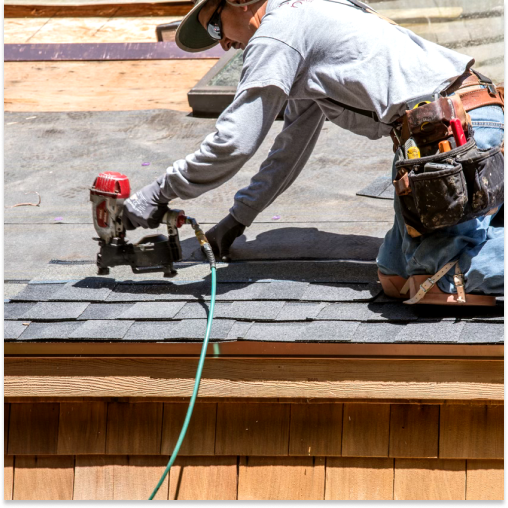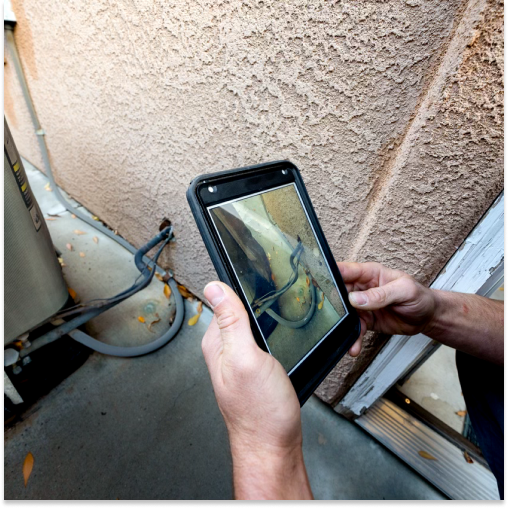Creating a detailed and comprehensive roofing contract is essential for both contractors and homeowners. In fact, a well-structured agreement ensures that all parties understand the scope of work, costs, materials, and timelines involved. But what should a roofing contract include specifically?
By outlining key elements in the contract, roofing contractors can protect their business and provide homeowners with peace of mind. In this guide, we’ll break down the must-have components of a roofing contract to ensure clarity and avoid misunderstandings.

What is a Roofing Contract?
A roofing contract is a formal agreement between a roofing contractor and a homeowner that outlines the details of a roofing project. It serves as a legally binding document that defines the scope of work, including the type of materials to be used, the cost of the project, and the timeline for completion.
The contract ensures that both the contractor and the homeowner are on the same page, providing clarity on what the contractor will deliver and the homeowner’s expectations. Without a well-drafted contract, miscommunications or disputes can arise. This can lead to delays, additional costs, or dissatisfaction with the work.
The main purpose of a roofing contract is to protect both parties by clearly laying out the agreement’s terms. For the contractor, it establishes payment terms, limits liability, and outlines the conditions under which the work will be performed.
For the homeowner, the contract provides assurances about the quality of work, the materials being used, and any warranties or guarantees. It also acts as a reference point in case issues arise during or after the project. In general, this ensures that both parties have recourse if problems occur. By defining the responsibilities of each party, a roofing contract minimizes the risk of legal or financial conflicts.
Having a solid contract helps ensure you get paid on time and protects your business from liability as well. It also prevents project delays by clearly defining responsibilities. The homeowner, on the other hand, benefits from knowing the exact costs, materials, and work timeline.
This mutual clarity ensures the job runs smoothly. Now, let’s dive into the key components that should be included in every roofing contract to protect both the roofing company and the homeowner.
What Should a Roofing Contract Include Exactly?
The roofing sales process culminates in an agreement and the signing of the contract. However, many contractors fail to include key information that can put both their business or the homeowner at risk.
So, what should a roofing contract include? Specifically, your contracts should always have these key details:
- Company Branding and Contact Information
- List of Materials
- Breakdown of Costs
- Proof of Licenses and Insurance
- Project Timeline
- Payment Schedule
- Guarantees and Warranties
- Terms and Conditions
From materials and products to the costs of labor, homeowners want clarity over where their money is going. Moreover, the contract is a binding agreement that not only prevents disputes but helps to build trust during the project lifecycle.
Therefore, let’s dig into each of these details further. This will help you better understand the purpose of the contract and how you can prevent missteps in the process.
1. Company Branding and Contact Information
The first element of a roofing contract is proper company branding and contact details. Your roofing contract should clearly display your company’s name, logo, address, phone number, and sales rep information.
This ensures that homeowners know exactly who they are working with and can easily reach you if needed. Branding also gives your contract a professional appearance, instilling trust in the homeowner.
Including your roofing license number is another critical step to prove that your business operates legally. This reassures the homeowner that you are qualified to perform the work. Additionally, include the homeowner’s contact information to ensure both parties have a way to communicate throughout the project.
2. List of Materials
Should you include a list of materials in a roofing contract? Without a doubt! Unfortunately, many roofers tend to overlook this step.
Roofing projects involve various materials, from shingles to flashing and nails. Clearly listing out every material that will be used in the project helps avoid confusion. It ensures the homeowner knows exactly what they’re paying for and prevents disputes about the quality or type of materials used.
For instance, if the homeowner expects premium-grade shingles but you plan to use standard-grade materials, this can cause issues. Roofing materials lists also help roofing companies stay organized. It reduces the likelihood of errors in ordering materials or running short during the project. For both the contractor and homeowner, clarity about the products guarantees expectations are aligned.
3. Breakdown of Costs
One of the most important aspects of a roofing contract is the cost breakdown. The homeowner needs to know exactly what they are paying for. This section should include the cost of materials, labor, permits, and any additional charges like cleanup or waste disposal. Providing a clear breakdown also helps homeowners avoid sticker shock when the final invoice arrives.
Furthermore, being transparent about pricing builds trust with the homeowner. It also protects you as a contractor by preventing disputes over hidden fees. A detailed cost breakdown ensures both parties understand the full scope of the project’s financial commitments.
4. Proof of Licenses and Insurance
Before beginning a roofing project, it’s essential to provide proof of licenses and insurance in the contract. Roofing is a high-risk job, and insurance protects both the contractor and homeowner from liability in case of accidents.
Providing proof of your license also ensures the homeowner knows you’re qualified to perform the work. Many homeowners will ask for this information upfront, so having it in the contract demonstrates professionalism.
5. Project Timeline
Timelines are critical in roofing contracts for the homeowner’s understanding and the roofing crew’s expectations. Include a detailed timeline that outlines the projected start and end dates. This prevents any confusion over project delays or expectations about when the work will be completed.
In addition to the overall timeline, you can break down the project into key milestones. For instance, the contract should list when materials will arrive, when the old roof will be removed, and when the installation will begin.
Having these details lets the homeowner know what to expect each day. Additionally, it helps your team stay organized and accountable.
6. Payment Schedule
A clear payment schedule may be the most important detail to include in a roofing contract. Homeowners should know when payments are due and what they are paying for at each stage of the project. Commonly, roofing contracts involve an upfront deposit, a mid-project payment, and a final payment upon project completion.
By clearly defining the payment structure in the contract, you protect your business from payment disputes. A well-outlined schedule ensures you get paid on time for each phase of the project. It also gives homeowners peace of mind knowing they won’t face unexpected charges.
It’s also important to offer flexible payment options to build trust with homeowners and close more deals. Roofing projects can be expensive, yet necessary. By offering financing, you can give homeowners more flexibility and comfort to get the work done without breaking the bank.
7. Guarantees and Warranties
Every roofing contract should include a clear outline of guarantees or warranties provided. This includes warranties on materials, workmanship, and any manufacturer warranties. For instance, many roofing materials come with a 20- or 30-year warranty, while contractors may offer a workmanship guarantee for a specific period.
Clarifying these terms in the contract avoids misunderstandings about who is responsible if something goes wrong with the roof in the future. Be sure to specify what the warranty covers, such as repairs, leaks, or replacements. In addition, be clear about how long the coverage lasts.
8. Terms and Conditions
The final essential component of a roofing contract is the terms and conditions. This section outlines the legal rights and responsibilities of both the contractor and the homeowner. It should cover dispute resolution processes, cancellation policies, and any clauses regarding unforeseen circumstances like bad weather.
Terms and conditions protect contractors from liabilities and ensure that homeowners understand the contractual obligations. This section is critical for preventing legal disputes, as it defines what happens if either party fails to meet their responsibilities. Always consult with a legal expert when drafting your contract’s terms and conditions to ensure full protection.
How Leap SalesPro Can Help Streamline Roofing Contracts
Creating comprehensive roofing contracts is critical but managing them efficiently is equally important. This is why Leap SalesPro is the industry’s leading in-home sales software for roofers.
Leap SalesPro is designed to help roofing contractors streamline their contracts and eliminate common errors during the sales process. You can automate much of the contract creation process, reducing the chances of mistakes or missing information. The software ensures that all necessary details—such as materials, pricing, and warranties—are included in every contract.
You can generate the most accurate estimates in roofing with pricing control and guardrails to prevent underselling a job. That way, your sales reps can focus on winning the job instead of calculating costs. Once you come to an agreement, you can quickly turn your estimate into a contract in just a few clicks with Leap’s dynamic contract linking.
Additionally, Leap SalesPro provides additional value through partner integrations. For example, our partners include measurement tools, manufacturers, roofing suppliers, imaging technology, marketing tools, financing lenders, and more!
You can create accurate estimates, generate and sign contracts, offer financing, send invoices, and collect payments directly within Leap SalesPro. It’s the complete roofing software that empowers your sales team and widens your margins!
So, what should a roofing contract include for your business? No matter your answer, Leap SalesPro is the perfect tool to streamline the contract creation process. To learn more, fill out the form below and schedule a quick demo with one of our software experts.




